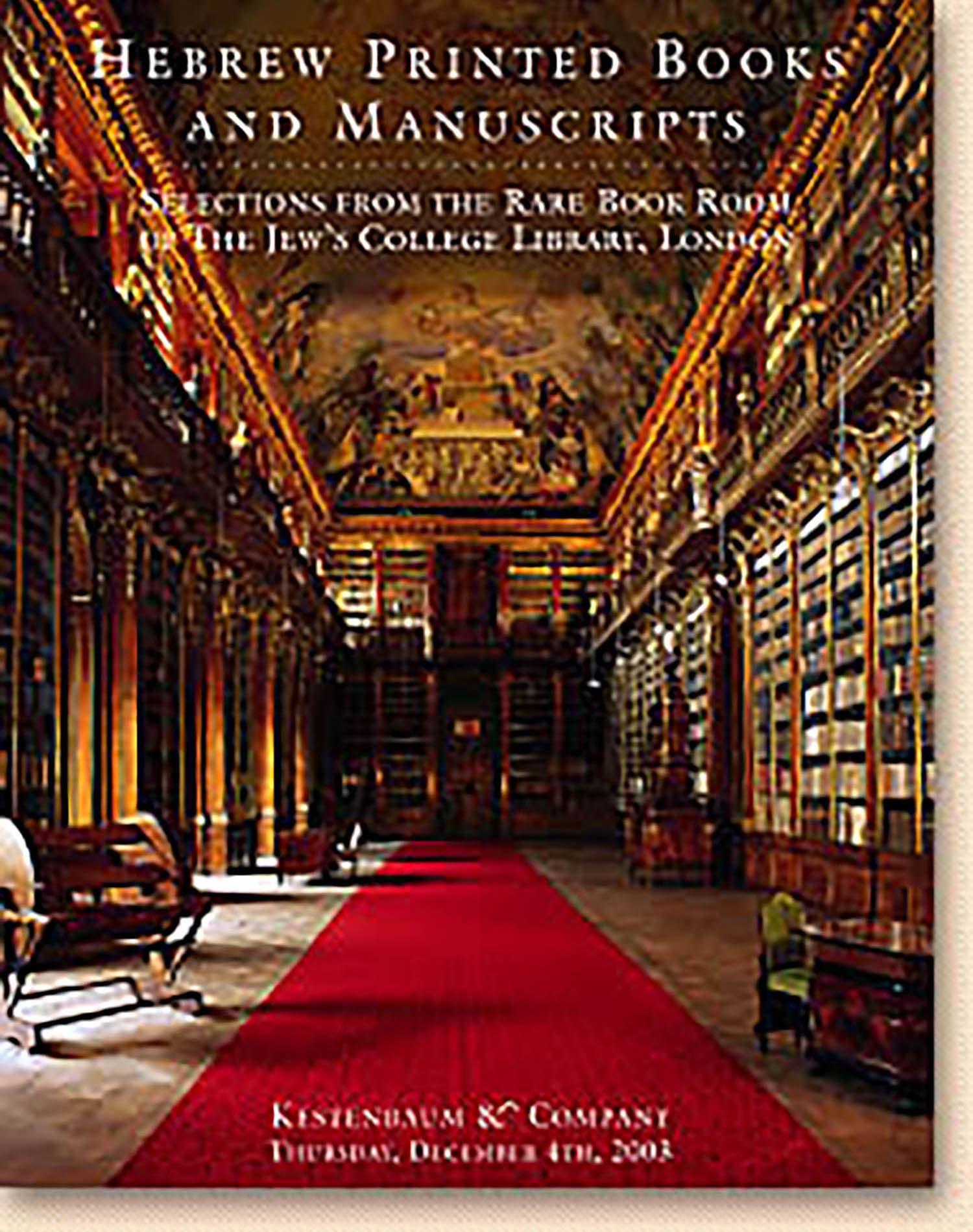Tehilah le-David [philosophy]

AUCTION 21 |
Thursday, December 04th,
2003 at 1:00
Kestenbaum & Company Holds Inaugural Auction of Hebrew Printed Books & Manuscripts at Their New Galleries
Lot 150
LEON, MESSER DAVID BEN JUDAH
Tehilah le-David [philosophy]
Constantinople: Joseph Javetz 1576
Est: $4,000 - $6,000
PRICE REALIZED $3,000
David Messer Leon (c. 1470-1526), ordained rabbi aged eighteen, devoted Kabbalist ,as well as admirer of Maimonides, boasted a comprehensive knowledge of general culture, particularly philosophy, and an affection for poetry and music.
Tehilah Le-David, which was published by the author's grandson, comprises three parts: The first deals with the prominence of the Law; the second with the elements of faith - which the author regards as superior to speculative reasoning; while the third focuses upon the principles of the Divine Attributes, Providence and Free Will.
This is the only work of philosophy of Messer Leon to be published. Other works still in manuscript are Magen David, dealing with the problem of the nature of the sephiroth, and Ein ha-Kore, a commentary on Maimonides’ Guide of the Perplexed.
In1899, Simon Bernfeld published Kevod Hakhamim, a halakhic ruling to justify the use of the ban against dissident scholars. Messer Leon had served since 1512 as rabbi of Valonia, Albania. Friction developed between the native Romaniote community and the recent influx of Spansh and Portuguese emigres. On the night of Yom Kippur (the Day of Atonement) a row broke out between the two contingents and Messer Leone wa insulted, prompting him to invoke the ban against two Sephardi scholars. Besides its obvious halakhic interest, Kevod Hakhamim serves as interesting sociological commentary on the changing demography of the Balkans.
See I. Zinberg, A History of Jewish Literature, Vol. IV (Italian Jewry in the Renaissance Era) (1974), pp. 91-98; EJ, Vol.11, cols. 27-28.
